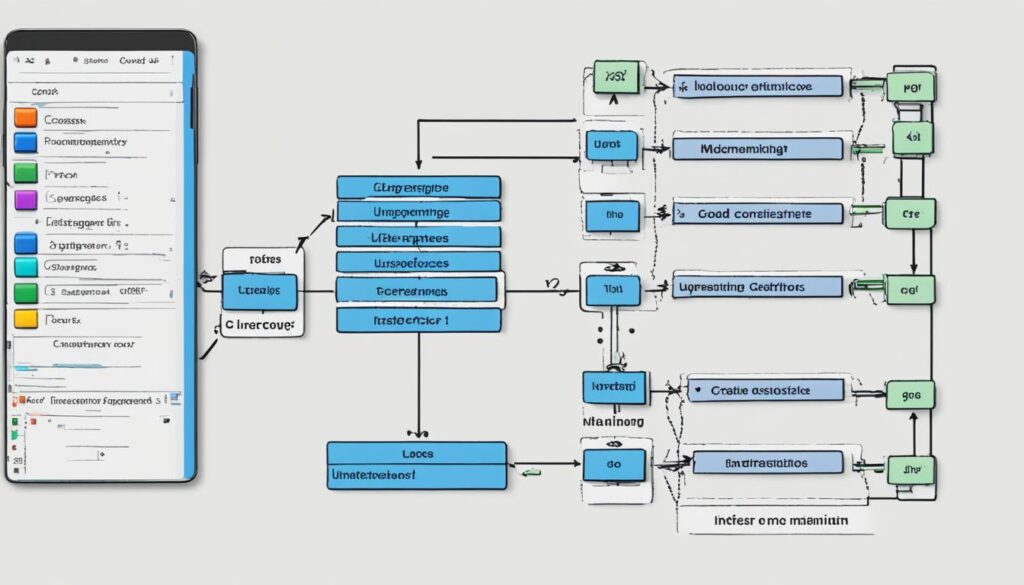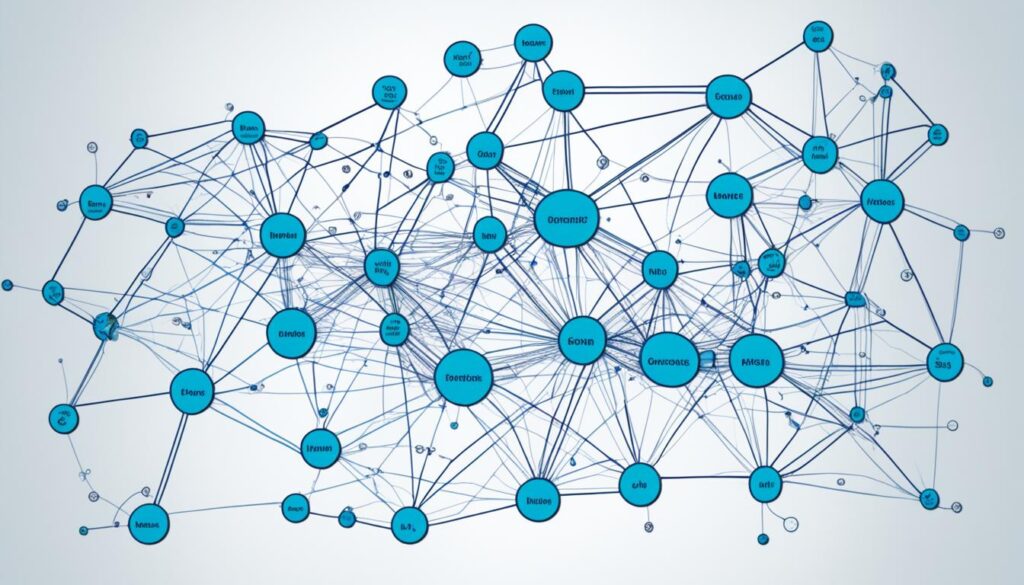Pointers are a fundamental aspect of Go programming that allows us direct access to memory management, significantly enhancing our code’s efficiency. By directly manipulating memory addresses, we can optimize how we handle large data structures and improve overall performance. Understanding pointers is essential for mastering Go, as they serve as a cornerstone for writing effective and efficient code. In this guide, we will explore the intricacies of pointers—covering their declaration, initialization, utilization, and the common pitfalls to avoid—along with practical examples that underscore their importance.
Key Takeaways
- Pointers are crucial for efficient memory management in Go programming.
- Mastering pointers enhances our ability to manipulate large data structures effectively.
- Understanding how to declare and initialize pointers is vital.
- Using pointers correctly can significantly optimize our code’s performance.
- Avoiding common pitfalls, such as dereferencing nil pointers, is essential for robust code.
Understanding Pointers and Memory Addresses
Pointers play a significant role in efficient programming, especially in Go. They serve as variables that hold memory addresses of other variables, enabling us to manipulate data effectively. Understanding pointers and memory addresses enhances our ability to manage memory efficiently within applications.
When we access stored data, we need to recognize that this process requires knowledge of memory addresses. In Go, pointers allow us to reference data directly. This mechanism is crucial for effective memory management, letting us modify data without excessive overhead.
Understanding pointers and memory addresses is essential for optimizing performance. By working with pointers, we minimize the need for copying data, which can save time and resources. In the context of Go programming, mastering these concepts fosters greater control over data, leading to more efficient applications.
| Concept | Description |
|---|---|
| Pointers | Variables that store memory addresses. |
| Memory Addresses | Unique identifiers for data locations in memory. |
| Memory Management | The process of efficiently utilizing memory resources. |
| Data Manipulation | Directly accessing and modifying data using pointers. |
What is a Pointer in Go?
In Go, a pointer is a special variable that stores the memory address of another variable. Understanding what is a Pointer in Go enhances our ability to manage data effectively. Through pointers, we can access and modify the value they point to indirectly, which proves to be quite powerful.
The Go pointers definition highlights their significance in programming, especially when working with large data structures. Instead of copying the contents of these structures, we can employ pointers to reference the original data. This practice not only conserves memory but also improves code performance significantly.
Utilizing pointers becomes particularly beneficial when dealing with mutable data. For instance, if we want to update values frequently without creating unnecessary copies, pointers facilitate this process efficiently. Below is a comparative view of traditional variable handling versus using pointers:
| Method | Memory Usage | Performance |
|---|---|---|
| Without Pointers | Higher | Slower |
| With Pointers | Lower | Faster |
We can see the clear advantages of using pointers in Go, leading to better performance and efficiency in our applications. By further exploring how we utilize pointers in practice, we can enhance our programming skills. For more insights on optimizing coding efficiency, click here.
Declaring and Initializing Pointers
Understanding the process of declaring pointers is essential for effective programming in Go. A pointer provides a way to reference a variable’s memory address, offering more control over data management. In Go, declaring pointers involves using the asterisk (*) followed by the data type of the variable it will point to. For instance, we use the syntax var ptr *int to declare a pointer to an integer.
Pointer Declaration Syntax
When we declare a pointer in Go, the syntax clearly indicates the intent to store a memory reference rather than a direct value. The format var ptr *Type is straightforward, allowing us to define pointers easily. Following this syntax ensures we follow standard practices and maintain code readability.
Initializing Pointers with the Address Operator
Once we have declared our pointers, initializing them occurs through the address operator (&). By using this operator, we can assign the memory address of an existing variable to our pointer. This method of initializing pointers is crucial, as it allows us to reference existing variables effectively. For example, if we have an integer variable x, we can initialize the pointer with ptr = &x. This action sets ptr to point to the memory location of x, enhancing the usability and efficiency of our code.
Proper understanding and execution of both declaring pointers and initializing pointers with the address operator will lead to more efficient and scalable applications. For a deeper dive into structured programming methodologies, exploring object-oriented principles can provide additional insights into enhancing code organization and maintainability.
Dereferencing Pointers
Dereferencing pointers is a fundamental concept in programming that enables us to access values stored at specific memory addresses. To dereference a pointer, we use the asterisk (*) operator. This operator allows us to interact with the actual data rather than the location of the data. Understanding how to dereference pointers is essential as it provides us the ability to read and write values directly in memory.
When we dereference a pointer, we gain access to pointer values that might be critical for our application logic. For instance, if we have a pointer that references an integer, we can modify the integer’s value through dereferencing. This functionality can make our programs more efficient and powerful. Here’s a simple example to illustrate the process:
var num int = 10 var ptr *int = &num // ptr now holds the address of num fmt.Println(*ptr) // This will print the value of num, which is 10 *ptr = 20 // Now, we change the value directly using dereferencing fmt.Println(num) // This will now print 20
Through this example, we see how crucial dereferencing pointers becomes for accessing pointer values securely and effectively. Using this knowledge can significantly enhance our programming capabilities, allowing us to create more complex and efficient code. To dive deeper into performance optimization techniques, we recommend exploring mastering ABAP debugging and performance tuning.
In summary, the act of dereferencing pointers empowers us with the ability to manipulate data directly. This can lead to enhanced control within our applications. By mastering this technique, we can improve our overall coding practices and contribute to more efficient software solutions.
Passing Pointers to Functions
When we discuss Passing pointers to functions in Go programming, we open the door to a realm of efficiency and clarity. By passing pointers to functions, we allow those functions to interact directly with the original data, rather than working with a copy. This approach not only significantly reduces memory usage but also enhances the speed of execution, especially when dealing with large data structures.
Benefits of Passing Pointers
The Benefits of passing pointers extend beyond just efficiency. Below are some core advantages:
- Memory Efficiency: By passing pointers, we avoid unnecessary data duplication, which is crucial for memory-intensive applications.
- Performance Improvement: Functions can operate faster on references instead of copying entire data structures.
- Enhanced Modification: Any changes made inside the function affect the original data, making it easier to manage state across functions.
- Simplified Code Maintenance: Reusability of functions increases, allowing us to write more modular code.
Examples of Pointer Function Usage
To illustrate the efficiency of Passing pointers to functions, we can examine a simple example:
package main
import (
"fmt"
)
func updateValue(val *int) {
*val = 20
}
func main() {
number := 10
fmt.Println("Before:", number) // Output: Before: 10
updateValue(&number)
fmt.Println("After:", number) // Output: After: 20
}
This example clearly shows how passing a pointer allows the function updateValue to modify the original variable directly. The original value changes without any extra memory overhead for creating a copy of the variable.
For those interested in further enhancing their coding practices, examining modularization techniques can provide substantial insights on improving code quality and maintainability.
Pointers with the New() Function
In our exploration of Go programming, we encounter the importance of memory management, particularly through using New() function with pointers. The `new()` function serves a vital role by allocating a new zero value of a specified type. When employed, it returns a pointer to that value, facilitating efficient handling of memory during runtime.
Utilizing the `new()` function enhances our ability to allocate memory dynamically. This technique is invaluable in scenarios where we need to create data structures on-the-fly. By using pointers, we can manipulate the allocated memory directly, allowing for effective memory usage without the cumbersome overhead of traditional memory management methods.
We can delve deeper into how the `new()` function works by examining a straightforward comparison:
| Data Type | Using New() Function | Traditional Allocation |
|---|---|---|
| Integer | p := new(int) |
var i int |
| String | p := new(string) |
var s string |
| Struct | p := new(MyStruct) |
var myStruct MyStruct |
This table highlights how the `new()` function supports efficient memory allocation for various data types. We see that utilizing pointers enhances our programming practice, especially when we require flexible and dynamic memory management. Proficiency in using New() function with pointers ultimately empowers us in our Go projects, leading to cleaner and more maintainable code.
Using Pointers to Modify Data
Understanding how to utilize pointers in Go programming allows us to effectively modify data. Pointers facilitate changes to the actual contents of variables rather than merely working with copies. This concept becomes especially important when we explore mutable vs immutable data.
Understanding Mutable vs Immutable Data
In Go, data types can be classified as mutable or immutable. Mutable data types can be altered after creation, while immutable data types remain constant. By leveraging pointers, we can optimize memory usage and performance in our programs.
The following table presents a comparison of mutable and immutable data types:
| Data Type | Mutability | Example |
|---|---|---|
| Slice | Mutable | Changing the size or contents of a slice |
| Map | Mutable | Adding or removing key-value pairs |
| String | Immutable | Creating a new string instead of altering the original |
| Array | Mutable | Modifying elements of an array |
Using pointers to modify data enhances our control over mutable types while maintaining efficiency. A strong understanding of mutable vs immutable data helps us make informed decisions about when to apply pointers in our code.
Pointer to Structs
Pointers play a crucial role when it comes to working with structs in Go. Utilizing a pointer to structs can enhance memory efficiency and optimize performance significantly. By forging multiple references to the same struct, we avoid the overhead of duplicating entire struct contents. Understanding how to adopt these strategies in our applications leads to improved data handling accuracy and overall effectiveness.
Creating Structs with Pointers
Creating structs with pointers opens up new avenues for managing data. Instead of passing the entire struct, we can create a pointer that references the struct. This technique minimizes memory usage and renders efficient code execution. Using the ampersand operator (&), we can easily create pointers for our structs, allowing us to streamline processes while maintaining data integrity.
Memory Efficiency with Struct Pointers
Memory efficiency becomes paramount in resource-intensive applications. The use of struct pointers aids in conserving memory by preventing unnecessary copies. When multiple components need to access or modify a struct’s data, pointers provide a unified reference point. This approach not only optimizes memory utilization but also fosters more coherent data manipulation strategies in our programs.
Understanding Interfaces and Implementing Them
In the realm of Go programming, understanding interfaces in Go plays a vital role in achieving a flexible, contract-driven approach to coding. Interfaces allow us to define methods that types must implement, promoting a level of abstraction that enhances code maintainability and extensibility.
Implementing interfaces effectively becomes crucial for developers as it paves the way for polymorphism. A pointer can simplify interface implementations by allowing us to manipulate the data being referenced without creating unnecessary copies. This practice not only streamlines our code but also leads to better memory management.
To illustrate how pointers interact with interfaces, let’s consider a basic example. We start with an interface that describes a general shape:
| Interface | Struct Implementation |
|---|---|
| Shape | Circle |
| Area() | func (c *Circle) Area() float64 { return math.Pi * c.radius * c.radius } |
| Perimeter() | func (c *Circle) Perimeter() float64 { return 2 * math.Pi * c.radius } |
In this example, the Circle struct implements the Shape interface, allowing us to manage different shapes effectively. By using pointers when implementing interfaces, we maintain consistent performance while enhancing our ability to create extensible code bases.
Our mastery of understanding interfaces in Go will be further enriched by examining how to implement various patterns and applying these concepts in real-world scenarios. This understanding not only improves our programming capabilities but also lays the groundwork for more complex constructs in Go.

Defining Methods on Types
In Go, we place significant importance on defining methods on types, particularly when working with struct types. Defining methods on types in Go allows us to enhance functionality and tailor our code to meet specific needs. By associating methods with particular types, we can encapsulate behavior, promoting cleaner and more organized code.
A critical aspect of method definition is the choice of receiver type. We can utilize pointer receivers for methods, which enables us to modify the state of the receiver directly. This differs from value receivers, which work with a copy of the receiver. When we choose to use pointer receivers, we can ensure that any changes made in the method will affect the original instance of the type.
For instance, consider a simple struct that represents a circle:
type Circle struct {
Radius float64
}We can define methods on this Circle type to calculate its area and perimeter:
func (c *Circle) Area() float64 {
return math.Pi * c.Radius * c.Radius
}
func (c *Circle) Perimeter() float64 {
return 2 * math.Pi * c.Radius
}In this snippet, the use of pointer receivers allows us to easily update the state of the Circle type’s Radius attribute if needed. For example, if we wanted to change the radius and recalculate its area, we would benefit from having methods that can modify the actual object rather than just a copy. This practice not only simplifies our code but also improves performance by avoiding unnecessary data duplication.
Through our exploration of defining methods on types in Go, we see how essential it is for implementing efficient and effective programming patterns. Emphasizing pointer receivers enhances our ability to manage state within our types, ultimately leading to more robust and flexible applications.
Methods and Interfaces
Methods and interfaces in Go enable us to delineate specific behaviors on our custom types, enhancing the overall structure of our code. Understanding the connection between these concepts can significantly improve how we utilize pointers, especially when dealing with complex data types.
To effectively implement methods and interfaces in Go, we define a method by associating it with a specific type. This method can then utilize receiver values, allowing us to modify the original data structure or to produce new instances based on existing ones. The integration of methods into our custom types promotes code reusability and clearer interfaces.
Interfaces allow us to create flexible functions and structures by defining a set of methods that any type can implement. This flexibility becomes especially potent when coupled with pointers, giving us the ability to modify the internal state of an object without creating additional copies in memory. As a result, we can avoid unnecessary memory overhead while retaining the functionality that methods and interfaces in Go provide.
Below we illustrate a simple example to demonstrate how methods and interfaces can interact:
| Type | Method | Interface Implementation |
|---|---|---|
| Circle | Area() float64 | Shape |
| Rectangle | Area() float64 | Shape |
In this example, both Circle and Rectangle types implement the Area method, adhering to the Shape interface. Utilizing pointers when passing these types allows us to modify their properties directly, cementing the connection between methods and interfaces in Go while optimizing performance through efficient memory use.
Common Pitfalls with Pointers
Understanding the common pitfalls with pointers is crucial for safe and efficient programming in Go. Pointers can introduce complexities that, if mismanaged, lead to significant errors. Two of the most critical issues include dereferencing nil pointers and memory leaks.
Dereferencing nil Pointers
Dereferencing nil pointers can result in runtime panics, causing our applications to crash unexpectedly. This occurs when we attempt to access or modify the value at a pointer that hasn’t been initialized. To avoid this, we should always validate pointer values before dereferencing them. Employing checks to confirm that a pointer indeed points to a valid memory address can save us from these potential disasters.
Memory Leaks and Pointer Misuse
Memory leaks represent another serious challenge associated with pointer management. Poorly managed pointers may prevent the garbage collector from reclaiming memory, leading to excessive memory consumption. Ensuring that pointers are properly released after use is vital for maintaining the application’s performance. We can implement techniques such as using a `defer` statement to help manage resources more effectively.

Best Practices for Using Pointers in Go
Implementing the best practices for using pointers is essential for writing high-quality code in Go. By utilizing pointers effectively, we can optimize our code and manage memory efficiently. Understanding when to use pointers versus value types, as well as strategies for optimizing code with pointers, allows us to elevate our programming skills and maintain the performance of our applications.
When to Use Pointers
In several scenarios, pointers provide significant advantages over value types. We should consider using pointers in the following situations:
- Large data structures: Passing pointers to large structs or slices can enhance performance by avoiding unnecessary copying.
- Mutability: When we need to modify the original variable within a function, passing pointers allows us to achieve that directly.
- Efficient memory management: Using pointers can help in managing memory allocations more effectively, reducing the overhead associated with duplication.
Optimizing Code with Pointers
Optimizing code with pointers benefits both performance and clarity. By adhering to certain guidelines, we can make our code more efficient and maintainable:
- Minimize pointer usage: Utilize pointers where necessary, but avoid excessive pointer indirection to maintain simplicity.
- Use nil pointers cautiously: Always check for nil pointers before dereferencing to prevent runtime errors.
- Profile code performance: Regularly profile the code to identify bottlenecks that could be improved with better pointer usage.
- Document pointer usage: Clearly comment on the purpose of pointers in our code to enhance readability and maintainability.
By adopting these practices, we can improve our programming techniques in Go. Further insights on effective implementation strategies can be explored in resources like this article on implementation and configuration.
Conclusion
In summary, mastering pointers in Go is integral to our journey towards efficient Go programming. These powerful features not only enhance memory management but also significantly improve code efficiency and data manipulation capabilities. By effectively utilizing pointers, we can make our applications more responsive and resource-efficient.
Moreover, understanding the intricacies of pointers, including their initialization, dereferencing, and usage within functions, empowers us to write more optimized and robust code. Identifying the right contexts for pointers enables us to unlock the full potential of the Go language, resulting in high-performance software solutions that meet and exceed user expectations.
As we continue to refine our skills, embracing the versatility and efficiency of pointers will undoubtedly bolster our programming expertise and foster the development of scalable, maintainable applications. With this knowledge, we are well-equipped to tackle the challenges of modern software development in Go.
FAQ
What are pointers in Go programming?
Pointers in Go are special variables that hold the memory address of another variable, enabling us to access and modify the value it points to indirectly, which enhances code efficiency.
How do we declare and initialize pointers in Go?
We declare a pointer in Go using the asterisk (*) followed by the data type, such as `var ptr *int. To initialize it, we use the address operator (&) to assign the memory address of an existing variable.
What is dereferencing a pointer?
Dereferencing a pointer involves accessing the value located at the pointer’s memory address, which we achieve using the asterisk (*) operator. This allows us to read and modify the data directly.
Why should we pass pointers to functions?
Passing pointers to functions allows them to modify the original data rather than creating a copy, which is particularly advantageous when working with large data structures to reduce memory consumption and improve performance.
What is the purpose of the new() function in Go?
The new() function allocates a new zero value of a specified type and returns a pointer to that value, making it useful for safe memory allocation in dynamic memory scenarios.
How do pointers relate to mutability in data types?
Pointers can change the actual contents of variables, which is particularly important when dealing with mutable data types, as they allow us to alter data while maintaining efficient memory usage.
How can we use pointers with structs in Go?
Using pointers with structs facilitates memory efficiency and performance optimization, enabling multiple references to the same struct without duplicating its content.
What role do interfaces play in Go’s use of pointers?
Interfaces in Go enable flexible contract-driven programming, and pointers can simplify the implementation of these interfaces, allowing us to utilize polymorphism effectively.
How do we define methods on types using pointers?
We define methods associated with specific types by using pointer receivers, which allows changes to the receiver’s state and thus improves method functionality.
What are common pitfalls associated with pointer usage?
Common pitfalls include dereferencing nil pointers, which can lead to runtime panics, and improper pointer management that can result in memory leaks. These issues must be navigated carefully.
What are best practices for using pointers in Go?
Best practices include assessing when to use pointers over value types and implementing strategies for optimizing code, ensuring clean, maintainable, and efficient programs.





